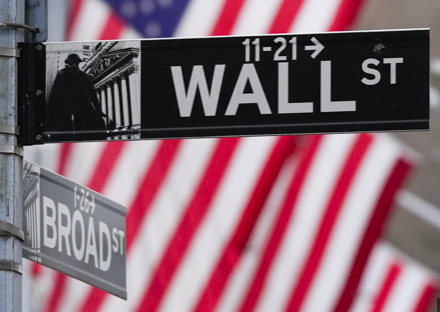
Are We Heading Toward Recession in 2025?
By Bedouin Report
Published December 2024
Republished on April 20, 2025
Executive Summary
The U.S. economy in 2025 exhibits concerning parallels to the conditions that preceded the 2008 financial crisis. Despite attempts to reform the financial system through measures like the Dodd-Frank Act, deregulation and speculative behaviors have persisted, leaving the economy vulnerable to systemic risks. The prolonged yield curve inversion, a reliable predictor of every U.S. recession since 1982, has persisted since 2022, reflecting tightening credit markets and declining investor confidence¹. Simultaneously, the housing market is increasingly dominated by speculative institutional investors, driving prices to unaffordable levels for the average American².
In this paper, we examine the interconnected factors contributing to economic instability, including protectionist trade policies under the Trump administration, the inflationary aftermath of COVID-19 stimulus measures, and the rapid emergence of Central Bank Digital Currencies (CBDCs). Case studies such as the collapses of Enron and Lehman Brothers are revisited to identify patterns of behavior that have driven past crises. Ultimately, this analysis reveals that without proactive policy interventions, the U.S. economy may be heading toward another catastrophic collapse.
Introduction
The 2008 financial crisis was a watershed moment that highlighted the fragility of global financial systems built on unregulated speculation and systemic vulnerabilities. The collapse of Lehman Brothers, which held $639 billion in assets but was over-leveraged and exposed to toxic subprime mortgage-backed securities (MBS), triggered a global panic that erased over $22 trillion in wealth³. In the United States alone, GDP contracted by 4.3%, unemployment peaked at 10%, and millions of Americans lost their homes⁴. Efforts to address these vulnerabilities, such as the Dodd-Frank Act, initially restored confidence, but subsequent deregulation has left the system exposed to similar risks.
Fast forward to 2025, and the warning signs of another economic collapse are mounting. The longest yield curve inversion in over four decades suggests an impending recession, with short-term borrowing costs surpassing long-term yields since mid-2022⁵. Housing market speculation has driven prices up 46% since 2019, with institutional investors accounting for 25% of home purchases, squeezing out individual buyers⁶. Meanwhile, the economic aftershocks of the COVID-19 pandemic, including record inflation and surging consumer debt, have further strained household finances⁷.
This paper explores these dynamics, revisiting historical case studies and examining current trends in trade, housing, digital currency, and financial markets. I argue that cyclical market behaviors and insufficient regulatory oversight have placed the economy on a precarious path, requiring policymakers to pay attention and possibly intervene to prevent a repeat of 2008.
Chapter 1: The 2008 Financial Crisis and Its Lessons


The 2008 financial crisis marked a catastrophic failure of the global financial system, fueled by speculative practices, risky financial instruments, and weak oversight. Lehman Brothers, once a titan of Wall Street, was emblematic of these failures. With a leverage ratio of 30:1, the firm’s heavy investment in MBS and collateralized debt obligations (CDOs) left it vulnerable when the housing market collapsed. Lehman’s bankruptcy in September 2008, the largest in U.S. history, triggered a global financial panic that erased $10 trillion in market capitalization⁸.
The consequences of the crisis were far-reaching. U.S. GDP contracted by 4.3% from Q3 2008 to Q2 2009, wiping out years of economic growth⁹. Unemployment soared to 10%, leaving over 15 million Americans jobless, while median household wealth declined by 35%, disproportionately affecting middle-class families¹. The ripple effects extended globally, destabilizing economies and eroding public trust in financial institutions.
Historical precedents, such as Enron’s collapse in 2001, highlight recurring patterns of corporate greed and regulatory failure. Enron used Special Purpose Entities (SPEs) to conceal debt and inflate profitability, resulting in $74 billion in shareholder losses¹¹. The Sarbanes-Oxley Act of 2002 sought to address these issues, but similar practices resurfaced in the lead-up to 2008. While the Dodd-Frank Act aimed to impose stricter regulations, subsequent deregulation, including the rollback of the Volcker Rule, has reignited concerns about speculative market behavior¹². The cyclical nature of financial crises underscores the importance of learning from past failures. Without robust oversight and accountability, the structural vulnerabilities that led to 2008 remain unresolved, leaving the system exposed to future shocks.
Chapter 2: Economic Trends from 2019-2024
The years between 2019 and 2024 represent a critical period of economic transformation, marked by the dual impact of policy decisions and global events. Among these, the Trump administration’s protectionist trade policies and the COVID-19 pandemic’s economic fallout stand out as defining factors that reshaped markets, supply chains, and consumer behavior.
Trump’s Trade Tariffs and Economic Consequences
The Trump administration’s imposition of tariffs on $350 billion worth of Chinese imports signaled a significant shift in U.S. trade policy¹. These tariffs, ranging from 10% to 25%, aimed to reduce the trade deficit and encourage domestic manufacturing. While the U.S. trade deficit with China narrowed by $100 billion between 2018 and 2020, the broader economic impacts were mixed¹. Higher tariffs increased the cost of consumer goods by an average of 21%, translating into an additional $1,300 in annual expenses for the average household¹. The agricultural sector was particularly hard-hit, with soybean exports to China plummeting by 50%, costing American farmers $12 billion in lost revenue¹.These outcomes illustrate the complexity of protectionist policies, which often yield unintended consequences despite achieving targeted goals like deficit reduction.
The COVID-19 Pandemic and Its Aftermath
The COVID-19 pandemic triggered one of the steepest economic contractions in modern history. U.S. GDP declined by 3.4% in 2020 as businesses shuttered and consumer spending collapsed¹. To avert a deeper crisis, the federal government injected $6 trillion in stimulus funds, including direct payments to households, enhanced unemployment benefits, and aid for businesses¹.
While these measures provided short-term relief, they also laid the groundwork for significant inflationary pressures. By June 2022, consumer prices had risen by 9.1%, the highest inflation rate in over four decades¹. Supply chain disruptions, combined with surging demand for goods and services, exacerbated price increases across essential commodities such as food, energy, and housing².
The K-Shaped Recovery
The economic recovery from COVID-19 was highly uneven, characterized by what economists describe as a K-shaped trajectory. Wealthier households benefited from rising stock markets and increased home values, while lower-income individuals faced job losses and stagnant wages². This divergence widened wealth gaps, with the top 10% of earners accumulating 68% of all new wealth generated between 2020 and 2023². Meanwhile, consumer debt reached a record $17.1 trillion in 2024, underscoring the financial strain on middle- and lower-income households².
The Long-Term Implications
The combination of trade disruptions, pandemic-related stimulus, and inflation has created a fragile economic environment. Federal Reserve policies, including aggressive interest rate hikes, have further tightened credit markets, increasing borrowing costs for businesses and consumers². These dynamics highlight the interconnected nature of policy decisions and their cascading effects on economic stability.
Chapter 3: The Housing Market Crisis
Explosive Growth in Home Prices
Between 2019 and 2024, the U.S. housing market experienced unprecedented price increases. The median home price rose by 46%, from $280,000 in 2019 to $410,000 in 2024². This surge was driven by a combination of low interest rates, limited inventory, and speculative investment by institutional buyers. BlackRock and other private equity firms accounted for 25% of all home purchases in 2022, focusing on single-family homes that were converted into rental properties².
The Housing Affordability Challenge
Housing affordability has reached a crisis point. Nearly 40% of renters now spend more than 30% of their income on housing, up from 28% in 2010². Mortgage delinquency rates climbed to 4.7% in 2023, reflecting growing financial distress among homeowners². These trends mirror the speculative excesses that preceded the 2008 housing market crash, raising concerns about the sustainability of current market conditions.
The Role of Wall Street
The increasing involvement of institutional investors in the housing market has significantly altered its dynamics. By turning single-family homes into rental properties, these firms have reduced the availability of affordable housing for individual buyers. Additionally, their speculative activities have driven up prices, creating barriers for first-time homebuyers and exacerbating wealth disparities².
Policy Interventions and Risks
Efforts to address the housing crisis have included proposals for zoning reform and incentives for affordable housing construction. However, these measures have been slow to materialize, leaving millions of Americans without viable housing options. The Federal Reserve’s interest rate hikes in 2023 and 2024, intended to curb inflation, have also made mortgages more expensive, further cooling the market³.
Chapter 4: Central Bank Digital Currencies (CBDCs)
What Are CBDCs?
Central Bank Digital Currencies (CBDCs) represent a significant innovation in monetary policy, combining the convenience of digital payments with the stability of state-backed currencies. Unlike decentralized cryptocurrencies like Bitcoin, CBDCs are issued and regulated by central banks³. The Federal Reserve began exploring CBDCs in 2021, with pilot programs launched in 2023.
Global Developments: China’s Digital Yuan
China’s Digital Yuan, introduced in 2020, has been a pioneering example of CBDC implementation. By 2023, the currency had over 140 million active users, streamlining transactions and reducing reliance on traditional banking systems³. However, critics have raised concerns about privacy and the potential for increased government surveillance of financial transactions³.
What Are The Implications for the U.S. Economy?
The adoption of a digital dollar could revolutionize payment systems, reducing transaction costs by 3%–5% and improving financial inclusion for 14 million unbanked Americans³. However, it also poses risks, including disruptions to the traditional banking system and challenges to the U.S. dollar’s status as the global reserve currency³. Balancing these benefits and risks will be critical as policymakers consider the future of digital currency.
Chapter 5: Bitcoin vs. Central Bank Digital Currencies (CBDCs)
The rise of Bitcoin and other cryptocurrencies has fundamentally altered the landscape of global finance. Introduced in 2009, Bitcoin operates on a decentralized blockchain network, offering an alternative to government-backed currencies. With a fixed supply of 21 million coins, Bitcoin has gained popularity as “digital gold,” appealing to investors seeking a hedge against inflation and currency devaluation³⁶. However, the emergence of Central Bank Digital Currencies (CBDCs) presents a new challenge to Bitcoin’s dominance and raises questions about the future of digital money.
Bitcoin’s Growth and Volatility
Bitcoin’s market capitalization surpassed $1 trillion in 2021, driven by increased institutional adoption and growing public interest in decentralized finance. However, its volatility remains a significant drawback. In 2022 alone, Bitcoin’s price fluctuated between $15,000 and $68,000, reflecting its susceptibility to market sentiment and regulatory developments³⁷. While proponents argue that Bitcoin’s limited supply provides protection against inflation, critics highlight its speculative nature and lack of intrinsic value.
CBDCs, unlike Bitcoin, are designed to complement existing monetary systems. By offering a stable and government-backed digital currency, CBDCs aim to enhance payment efficiency, reduce transaction costs, and improve financial inclusion⁸. The introduction of China’s Digital Yuan, for instance, has demonstrated the potential for CBDCs to streamline cross-border transactions and reduce reliance on the U.S. dollar in international trade⁹. This shift poses a direct challenge to Bitcoin’s role as a medium of exchange.
The Role of CBDCs in Financial Stability
Regulatory Concerns, Competition and The Implications for the Financial Ecosystem
The growing popularity of cryptocurrencies has prompted governments worldwide to increase regulatory scrutiny. In the United States, proposed legislation seeks to classify Bitcoin and similar assets as commodities, subjecting them to federal oversight⁴. The implementation of CBDCs could further marginalize Bitcoin by providing a more stable and widely accepted alternative. However, Bitcoin’s decentralized nature ensures its continued appeal to those seeking financial sovereignty and privacy.
The coexistence of Bitcoin and CBDCs raises important questions about the future of money. While CBDCs offer efficiency and stability, they also centralize financial power, potentially increasing government control over transactions⁴. Bitcoin, by contrast, operates independently of central authorities but lacks the scalability and stability required for widespread adoption. The interplay between these two systems will shape the evolution of global finance in the coming decade.
Chapter 6: Yield Curve Inversion as a Recession Indicator
The yield curve, which plots the relationship between short-term and long-term interest rates, has historically served as a reliable predictor of economic recessions. A yield curve inversion occurs when short-term rates exceed long-term rates, reflecting market expectations of slower economic growth. Since 1982, every U.S. recession has been preceded by a yield curve inversion, making it one of the most trusted indicators in economic forecasting⁴. It can be understood as the final nail in the coffin.
Historical Patterns and Predictive Power
The predictive reliability of the yield curve was evident during the lead-up to the 2008 financial crisis. In 2006, the yield curve inverted, signaling tighter credit conditions and reduced investor confidence. Eighteen months later, the economy plunged into recession⁴. Similar patterns were observed in the early 1980s and 1990s, reinforcing the yield curve’s value as a leading indicator. The current inversion, which began in July 2022, marks the longest such period in over four decades⁴.
The Current Yield Curve Inversion and The Economic Implications
The ongoing yield curve inversion reflects the Federal Reserve’s aggressive interest rate hikes to combat inflation. As short-term borrowing costs rise, businesses and consumers face higher expenses, leading to reduced investment and spending⁵. While the U.S. economy has shown resilience in terms of GDP growth and low unemployment, the inversion underscores underlying vulnerabilities, including record levels of consumer debt and housing affordability challenges⁶.
Prolonged yield curve inversions typically signal tighter credit conditions and declining consumer confidence. In the current cycle, corporate borrowing costs have risen sharply, discouraging expansion and investment⁷. For households, higher interest rates have increased mortgage costs, contributing to a slowdown in home sales and construction. These trends suggest that the delayed effects of monetary tightening may soon manifest in broader economic contraction.
A Cautionary Outlook: Interpreting the Yield Curve Inversion
The ongoing yield curve inversion has sparked considerable debate among economists about its relevance as a recession predictor in today’s complex economic environment. While some argue that the predictive power of the yield curve may be diminished due to unprecedented monetary policy interventions, such as quantitative easing and prolonged low-interest rates, historical evidence strongly suggests that its significance cannot be ignored. Since 1982, every U.S. recession has been preceded by a yield curve inversion, making it one of the most reliable indicators of economic downturns.
The current inversion underscores significant risks, particularly the threat of stagflation, a toxic combination of high inflation and stagnant economic growth. With inflation reaching multi-decade highs and economic expansion showing signs of slowing, the inversion reflects market pessimism about the Federal Reserve’s ability to engineer a “soft landing.” The challenge for policymakers lies in navigating this precarious environment without exacerbating existing vulnerabilities.
What does this mean for the economy as a whole? The inversion signals tightening credit conditions, as higher short-term borrowing costs deter investment and spending. Businesses are less likely to expand or hire, and households face greater financial strain as mortgage rates and other borrowing costs increase. This contraction in economic activity creates a feedback loop, further slowing growth and potentially tipping the economy into recession.
Moreover, the inversion raises questions about the long-term effects of monetary policy. Critics argue that decades of interventionist policies have distorted traditional market signals, complicating the interpretation of the yield curve. However, even in this altered context, the sustained inversion should not be dismissed as a mere anomaly. It reflects real concerns about structural weaknesses, including record consumer debt, an overheated housing market, and geopolitical uncertainties.
Policymakers must take seriously balancing efforts to control inflation with measures to sustain economic momentum which require coordinated fiscal and monetary strategies. Failure to address these challenges could result in another significant economic downturn, with widespread implications for businesses, households, and global markets. The lesson from history is clear: ignoring the yield curve’s signal has rarely ended without consequences.
Conclusion
History has shown us, time and time again, that crises, whether economic, social, or environmental, are rarely without warning. The 2008 financial crisis, devastating in its scope and impact, was not an unforeseen event but a culmination of reckless behaviors, regulatory failures, and ignored signals. Speculative investments, unethical practices within the financial industry, and weak oversight by institutions like the SEC laid bare the systemic vulnerabilities that had long gone unaddressed. Similarly, the tragic aftermath of Hurricane Katrina revealed a glaring lack of preparedness despite ample warnings about the levees’ fragility. From September 11, 2001, to the COVID-19 pandemic, and even the current economic climate of 2025, the signals of impending crises are often loud and clear, yet consistently ignored.
Recent events, such as the truck attack on Bourbon Street in New Orleans during New Year’s celebrations, echo this troubling pattern of complacency. In a climate of heightened global threats, mirrored by similar incidents, like the tragedy in Germany’s market, the failure to install robust safety measures is a stark example of neglect. Despite knowing that New Year’s Eve is a high-risk time requiring significant public safety precautions, authorities failed to act proactively, resulting in unnecessary fatalities, injuries, and damage. These failures to heed warning signs reflect a broader issue in governance: the inability to act before disaster strikes.
This failure to learn from history extends to today’s economic challenges. The housing market bubble, fueled by institutional speculation, mirrors the prelude to the 2008 collapse. The ongoing yield curve inversion, a highly reliable recession indicator, should serve as a call to action for policymakers, yet the response has been muted. Just as past crises were preceded by visible warning signs, so too are today’s risks, from record-high consumer debt to the unchecked proliferation of financial instruments like Central Bank Digital Currencies (CBDCs). The lesson remains unchanged: the signals are present, but proactive measures remain elusive.
Policymakers must take a fundamentally different approach if we are to break this cycle of crisis and complacency. Proactivity, rather than reaction, must become the cornerstone of governance. This includes implementing comprehensive safeguards to mitigate risks, strengthening oversight frameworks, and addressing systemic vulnerabilities across sectors. While no framework can entirely eliminate threats, measures can and should be taken to reduce risks and mitigate potential losses.
The cyclical nature of crises underscores a profound truth: history will repeat itself if we do not act decisively to change course. Ignoring the signs, whether in public safety, environmental resilience, or economic stability, leads to catastrophic outcomes. As we reflect on the warning signs of 2025, from the prolonged yield curve inversion to the housing affordability crisis, the time to act is now. Policymakers have the tools and knowledge to avert disaster, but they must choose to use them. The costs of inaction are far too great to be borne again.
Bibliography
- Federal Reserve Bank. Yield Curve Data: Trends and Analysis. Washington, D.C.: FRB, 2024.
- Congressional Research Service. Financial Crisis Overview: Lehman Brothers. Washington, D.C.: CRS, 2020.
- National Association of Realtors. Housing Market Report: 2022–2024. Chicago: NAR, 2024.
- U.S. Bureau of Economic Analysis. “Gross Domestic Product Data: 2008–2009.” Accessed January 2025. https://www.bea.gov.
- Federal Reserve Bank. Economic Trends and Indicators. Washington, D.C.: FRB, 2024.
- National Bureau of Economic Research. Speculative Investments in Housing Markets. Cambridge, MA: NBER, 2023.
- Pew Research Center. Wealth Inequality and Economic Stability. Washington, D.C.: Pew, 2023.
- Peterson Institute for International Economics. The Impact of Deregulation on Financial Markets. Washington, D.C.: PIIE, 2020.
- National Bureau of Economic Research. Corporate Fraud and Economic Policy: Enron’s Legacy. Cambridge, MA: NBER, 2022.
- U.S. Census Bureau. “Trade Deficit and Tariff Data: 2018–2020.” Accessed January 2025. https://www.census.gov.
- U.S. Department of Agriculture. Agricultural Exports and Trade Policies. Washington, D.C.: USDA, 2021.
- Federal Reserve Bank. COVID-19 Economic Stimulus Analysis. Washington, D.C.: FRB, 2022.
- U.S. Bureau of Labor Statistics. “Inflation Rates and Consumer Prices.” Accessed January 2025. https://www.bls.gov.
- Pew Research Center. The K-Shaped Recovery Post-COVID-19. Washington, D.C.: Pew, 2023.
- Federal Reserve Bank. Consumer Debt Trends. Washington, D.C.: FRB, 2024.
- Nakamoto, Satoshi. Bitcoin: A Peer-to-Peer Electronic Cash System. Accessed January 2025. https://bitcoin.org.
- People’s Bank of China. Digital Yuan Development Report. Beijing: PBOC, 2023.
- International Monetary Fund. Global Financial Stability Report. Washington, D.C.: IMF, 2022.
- Congressional Research Service. Dodd-Frank Act Overview and Analysis. Washington, D.C.: CRS, 2021.
- National Association of Realtors. Housing Affordability and Institutional Investments. Chicago: NAR, 2023.
- U.S. Bureau of Economic Analysis. “Historical Yield Curve Data.” Accessed January 2025. https://www.bea.gov.
- National Bureau of Economic Research. The Impact of Yield Curve Inversions on Recessions. Cambridge, MA: NBER, 2023.
- Peterson Institute for International Economics. Cryptocurrency Regulation and CBDCs. Washington, D.C.: PIIE, 2023.









More Stories
Sudan v. United Arab Emirates
The Ethical Approach to Reporting on the MENA Region